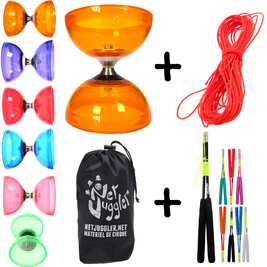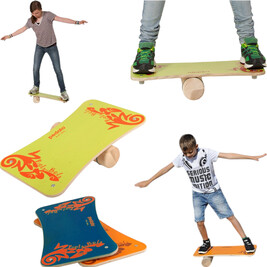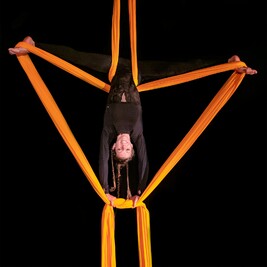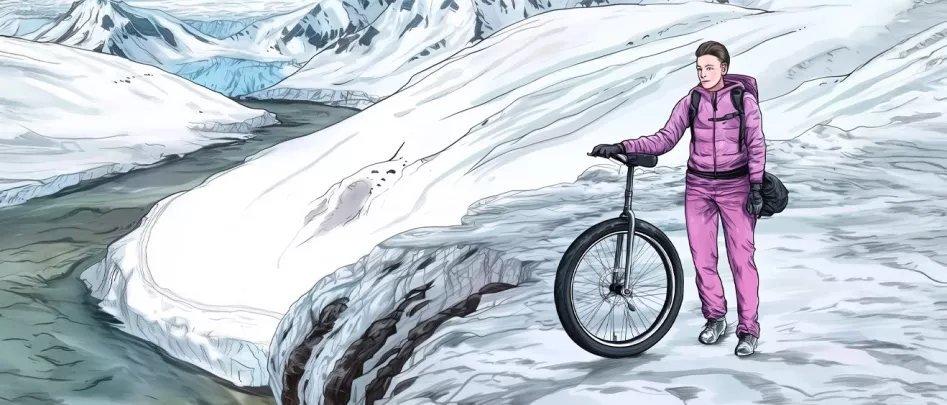
Unicycle: Solving Long Distance Side Tilt
Causes and Solutions for Side Tilt
Riding a unicycle long distances can reveal a common problem: a lateral lean, where the upper body leans to the left while the unicycle leans to the right. This imbalance, often tiring and sometimes painful, is well known to unicyclists. Fortunately, specific causes can be identified, and practical solutions exist to address it. This article details the biomechanical factors related to the rider, possible adjustments to the unicycle, and techniques and exercises to improve your balance. Follow this guide to correct your posture and fully enjoy your long-distance unicycle rides.

Biomechanical Causes of Lateral Tilt
Several physical aspects of a cyclist's riding can explain a tendency to lean to one side. Here are the main factors:
- Body Asymmetries : Few people have perfectly symmetrical bodies. A slightly longer leg, a misaligned hip, or a spinal misalignment (such as scoliosis) can tilt the pelvis. On a unicycle, the saddle straightens the body, but uneven pressure on one side can persist, creating an imbalance. With practice and strength training, these asymmetries can be compensated for.
- Muscle Dominance : Whether you're right- or left-handed, your dominant side may dominate the pedaling. For example, a stronger right leg may push more, causing the unicycle to veer to the right and the torso to lean to the left. Unbalanced pedaling (right foot from 12 o'clock to 6 o'clock, left foot from 11 o'clock to 5 o'clock) can exacerbate this problem.
- Muscle Fatigue : Over long distances, the stabilizing muscles (obliques, lower back, gluteus medius) become exhausted, especially on an inclined route. At the end of the ride, one side may "collapse" if the support muscles weaken. Stretching breaks help reduce this effect.
- Hip Stiffness : Unicycling requires hip mobility. If they lock, the upper body twists to compensate. One rider corrected a lean by relaxing his right hip.
- Postural Habits : On a unicycle with handlebars, holding one hand still (e.g., right) or always looking in the same direction can shift the torso. Alternating sides is a good habit to adopt.
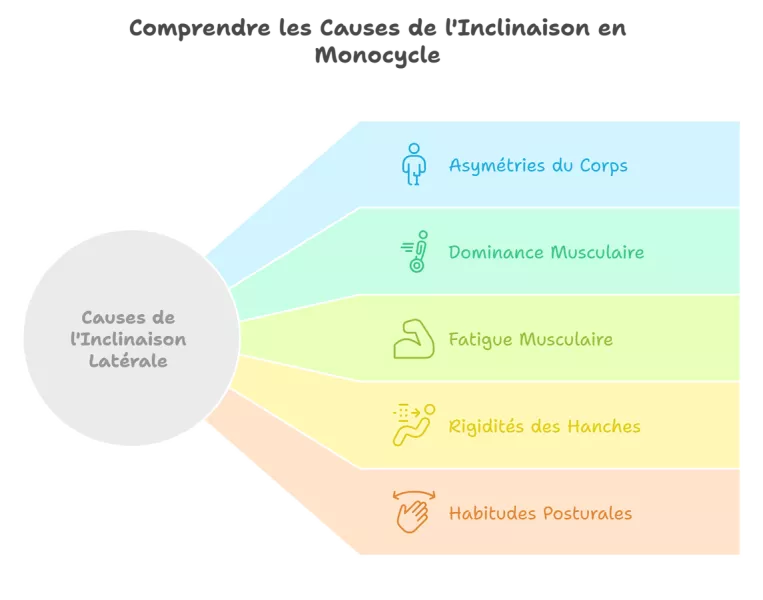
Influence of the Terrain: The Role of Slope
Road slope is a key external factor over long distances. Roads, often curved in the center, slope toward the edges to allow water to flow away. If you ride on the right, the unicycle naturally tilts to the right, forcing the body to lean left to maintain balance. This is not a defect, but a physical reaction. However, it can cause strain (lower back, knee) if not corrected. Proper techniques, detailed below, can minimize this impact.
Unicycle Adjustments: Optimize Your Equipment
Before blaming your body, check and adjust these parts of your unicycle:
- Saddle and Seat Tube
Make sure the saddle is straight and centered. A twisted saddle or bent seat tube (after a fall) can cause you to lean. Straighten or replace as needed. - Wheel Alignment
A wheel dishing pulls to one side. Reassemble it backwards: if the tire-fork gap remains uneven, it is off-center. Have it recentered (workshop or racking tool). Also check that the frame is not twisted (measure the fork legs). - Cranks, Pedals and Axle
A bent crank or loose pedals can disrupt balance. Check that the cranks are aligned. For a shorter leg, an orthotic insole is a simple solution. - Fine Saddle Adjustments
Slightly pivot the saddle towards the side you are leaning (e.g. left if you lean left). Or use shims (“L brackets”) to tilt laterally, raising the side where you are leaning too much. Keep it subtle (a few mm). - Handlebar or Grip
Check the handlebar alignment. Hold it with both hands on easy terrain for a symmetrical posture. With one handle, alternate hands. - Tire and Pressure
An unevenly worn or square-profile tire accentuates the slope, unlike a rounded tire. Reduce the pressure to 2 bar (30 PSI) to better hug the road, without going below the minimum. An advanced tip: slightly overinflate one sidewall on a constant slope (if the tube allows it). - Distribution of Charges
Balance a backpack or objects (e.g., water bottle) to avoid imbalance. Test on level ground after adjustments.
Tip : A well-adjusted unicycle rolls straight without effort. Check everything systematically.
Techniques and Exercises to Improve Balance
Work on your technique and physique to correct the tilt:
- Adapting your position on an inclined road: On a slope (e.g., right), push your hip toward the slope and lean your shoulders toward the top. Adjust with your feet (outside offset of the left foot) and pedaling pressure (less to the right, more to the left). Ride on the least inclined part if possible.
- Upper Body Posture: Keep your shoulders level and look forward. Relax your arms and alternate hands on the handle to avoid tension.
- “No Hands” Exercise: For 500 meters of flat ground, place your hands on your thighs and ride straight. Adjust your foot thrust if the unicycle veers. Switch to your hips, then to the handlebars continuously for perfect balance.
- Muscle Strengthening: If you lean to the left, strengthen the right side (side planks, single-leg squats, flamingo pose 30 seconds per side).
- Stretching and Mobility: Stretch your hamstrings, hips, and lower back, especially on the stiff side. Mobilize your hips and ankles for more fluidity.
- Breathing and Relaxation: Breathe deeply and release tension (shoulders, back). Pedal lightly to avoid stiffness.
Tip : Film yourself to see your incline. Practice regularly for lasting results.
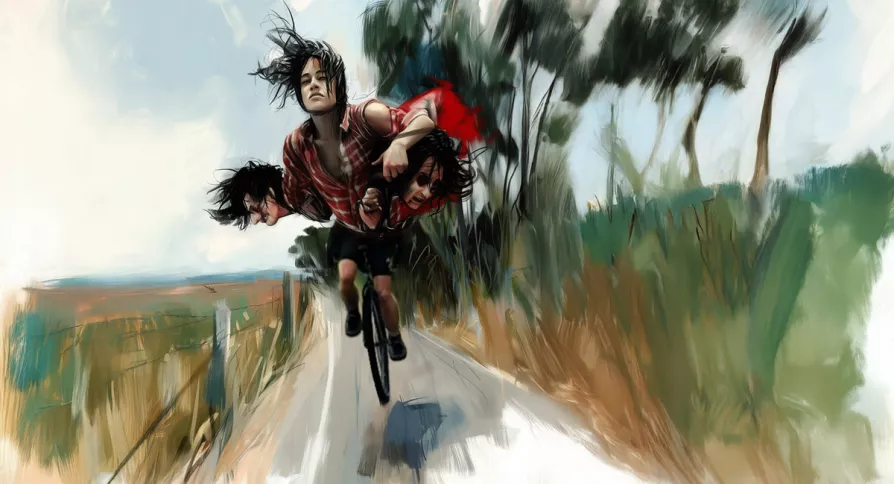
Conclusion: Correct and Ride with Confidence
Lateral leaning in long-distance unicycling results from a combination of factors: body (asymmetries, fatigue), unicycle (adjustments), and terrain (canting). Identify the causes and take action: check your equipment, refine your technique, practice. With patience, you'll ride straight and enjoy your adventures. Happy unicycling!
Comments
!Be the First to comment!
Quartz diabolo kit + Accessories
Triple bearing diabolo, Superglass sticks, 10m Henrys string and bag!


